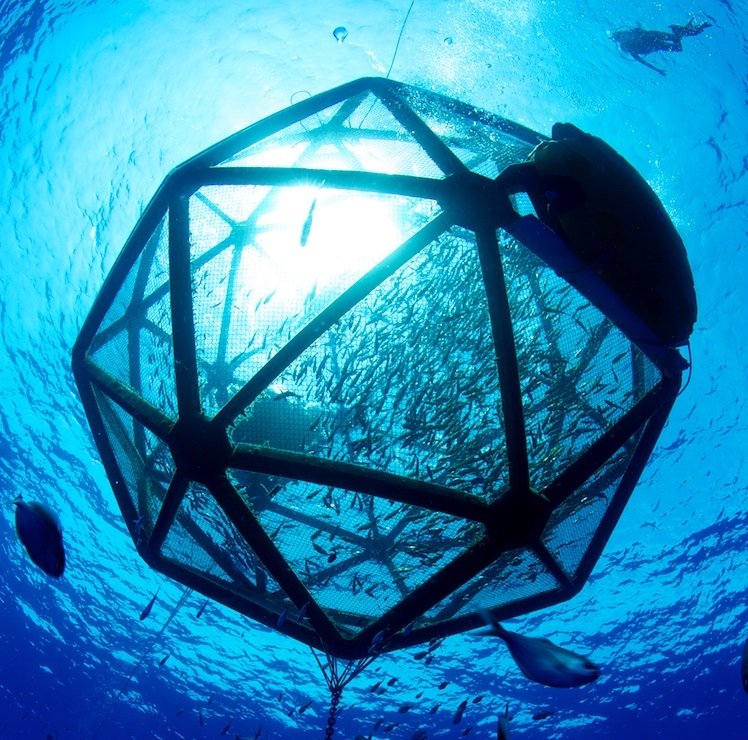
No doubt you already know that aquaculture is the marine equivalent of agriculture. Farming aquatic flora and fauna for human consumption. Mariculture is the same thing, but carried out offshore in the open ocean rather than the artificial pools on land where aquaculture is most commonly performed.
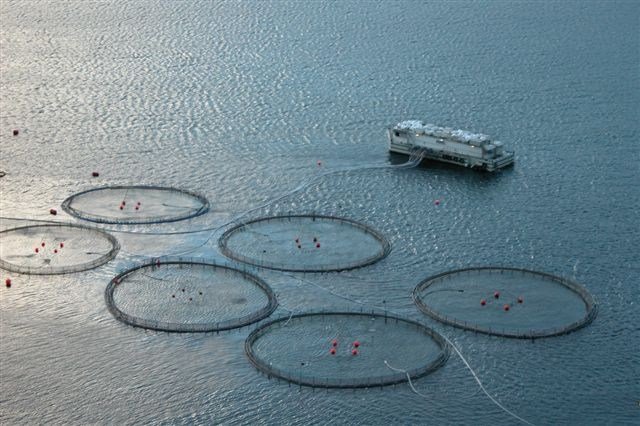
Until recently, that took the form of standard floating pens like those seen above, utilizing only the surface of the water and the portion of the water column immediately beneath it. The same thinking that traditional aquaculture employs, just transported out to sea. However, more innovative companies have been hard at work thinking of how to utilize the ocean in a three dimensional fashion.

Kampachi Farms, formerly Kona Blue, operates a cutting edge maricultural operation today off the coast of Hawaii. Initially they made use of farming enclosures designed and manufactured by Oceanspar corporation (seen above) before migrating over to their own in-house design, a geodesic sphere they call the aquapod (seen below).
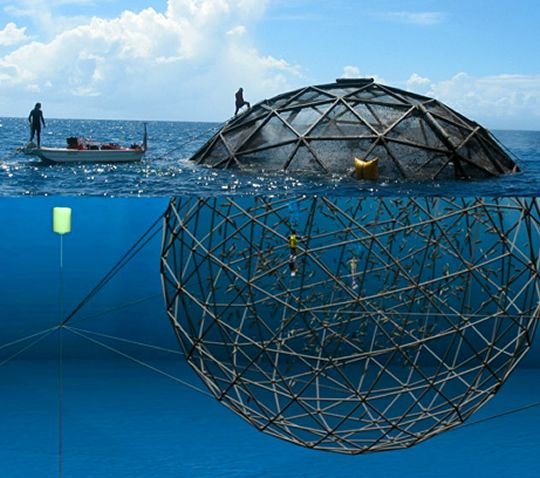
Which design is superior remains to be seen. The aquapod capacity is slightly lower, but they are designed to drift freely. They can in fact be released into prevailing oceanic currents, then picked up elsewhere for harvest. The advantage being that waste is released along the way and has no chance to become concentrated in any particular area.
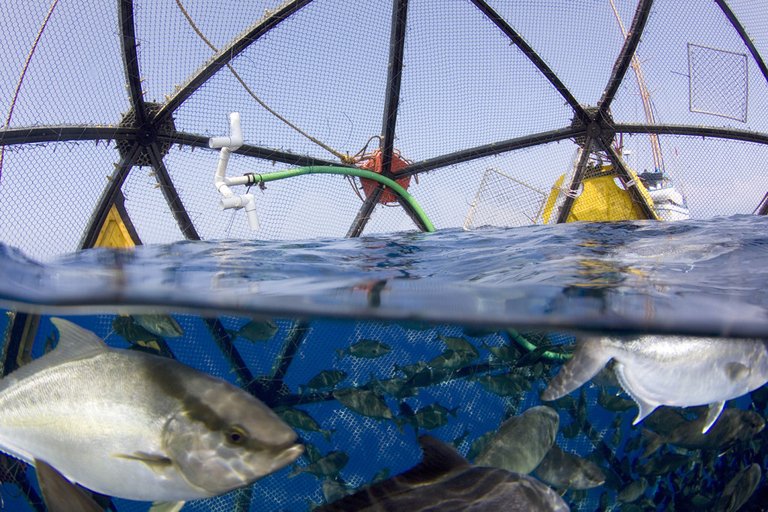
Pods are partially surfaced for harvest, which confines fish to a smaller volume, making them easier to scoop out. The oldest fish are harvested preferentially. The sick are released. Those that recover will add to the local population of that species, making this type of fish farming a net benefit to the environment in at least one way.
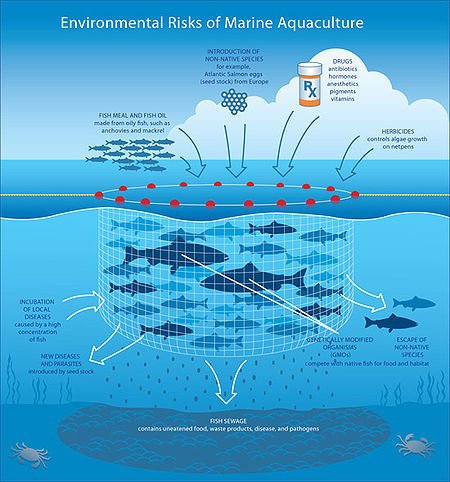
However, there exist legitimate environmental concerns surrounding this practice. Although it's better by far for more of us to eat fish rather than beef, given the atrocious energy and fresh water cost of raising cattle as well as the healthier qualities of fish meat, there are issues relating to the use of antibiotics to prevent disease from spreading between such densely cohabitating fish.
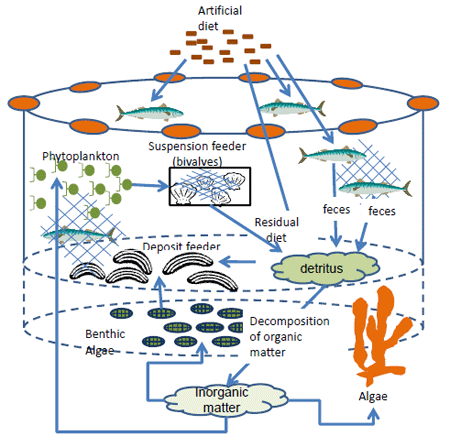
There's also the well founded objection that until very recently, the fish were fed...other fish. Smaller species considered inedible to humans or undesirable for other reasons. This would only deplete those species in order to cultivate the species that we do want to eat. The solution? A semi closed loop wherein the fish poop nourishes algae that grows below the pens, then the algae is processed into food for the fish.
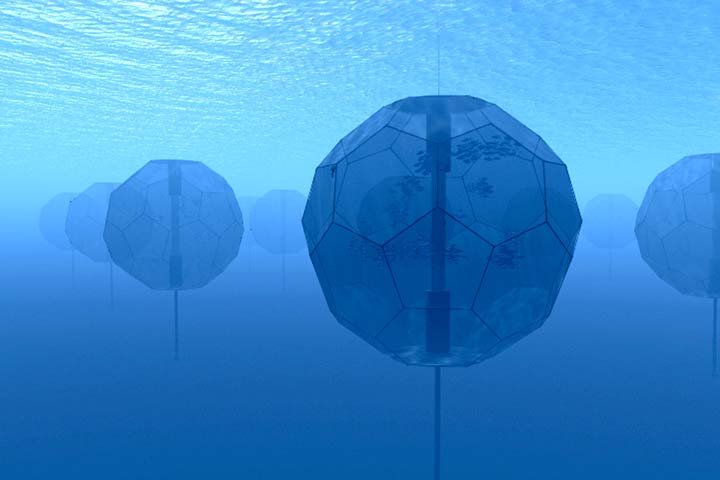
With most of the environmental issues now either sorted or with a solution imminently within reach, there is the problem of scaling up mariculture operations. As it stands, even Kampachi Farms only has a few dozen enclosures to tend to. But as overfishing kills off wild fish populations, we will come to rely more and more on mariculturally raised fish for protein. This will require drastically larger, better organized maricultural setups.
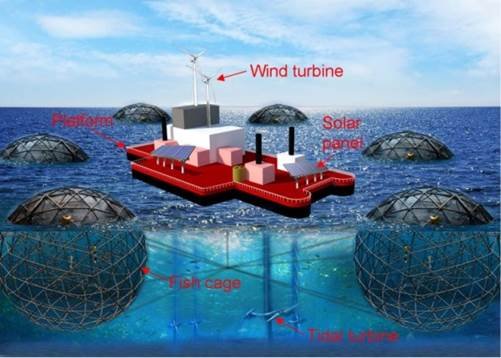
Currently, the few enclosures in any given operation can be maintained, inspected and harvested by a small team of scuba divers delivered to the work site by motor boat every week. But when such operations have hundreds of enclosures, or thousands, that isn't gonna cut it. A permanent manned presence on-site will be needed, as illustrated above.
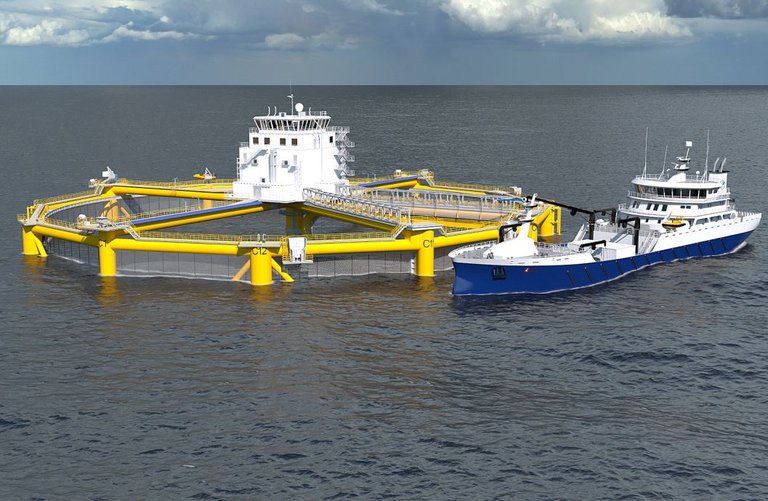
Aptly named Norwegian company Ocean Farming has leapfrogged ahead of competitors with the largest manned maricultural structure yet devised, seen above. I expect this to become the norm, although as vertically stacked enclosures become more widespread to make more efficient use of the plot of ocean they have a license to utilize, it may become economical to consider including saturation diving capabilities.
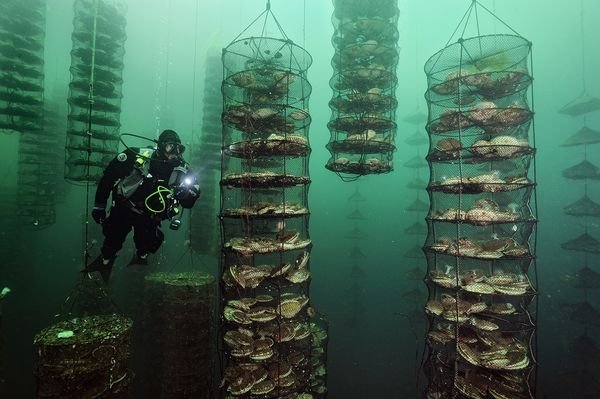
As we extend our farms deeper and deeper into the water column, divers will have less and less time at depth due to the increasingly rapid absorption of nitrogen into their blood and soft tissues. There is an inflection point beyond which it will make sense to start housing divers in an undersea habitat like Aquarius Reef Base, tending to the 'crops' and 'livestock' from below, rather than above.

This eventual necessity was predicted as far back as the 1970s. During the heyday of undersea habitat programs it was anticipated that future oceanic farming operations would grow to a scale where saturation diving would become crucial, if the divers who maintain and harvest the enclosures are to have the bottom time they need to do their job.
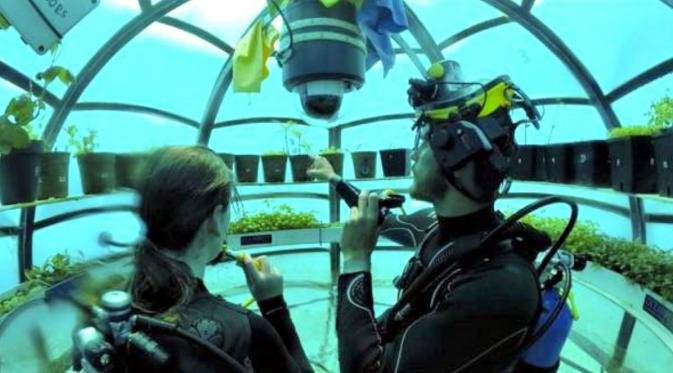
Today, Nemo's Garden gives us a glimpse of the future of undersea cultivation, albeit of terrestrial plants in that case. While the current state of the art for mariculture is the unmanned monitoring buoy or modest floating accommodations for divers, the future will be something like the maricultural equivalent of an oil rig, or a fully submerged seafloor habitat for those who live and work on-site. The farmhouse of the future, if you like.
I'd like to learn more about the specifics of how this would work. You mentioned that the problem with some types of "traditional" fish farming have environmental downside if the fish "crop" is fed smaller fishes that are harvested from wild sources. This could obviously have huge consequences on the marine ecosystem, since everything out there is food for something else. An algae diet could get around this problem, but is this actually workable? And has this actually been implemented a commercial scale?
Yes and yes. Kampachi Farms feeds their fish a vegan diet. You might think this would constrain them to raising only herbivorous fish, but it is possible to formulate nutritionally complete fish food for a variety of species where the protein comes from spirulina or chlorella, which are famously nutritious even by themselves. More here.
Although this seems to be a very good option for the future, I am questioning myself about the taste. For instance, one can easily distinguish wild salmon from farm-raised salmon.
Raising fishes in a different ways could actually change the taste of our food. Which may not be a big deal, but...
Yeah, also I'd like to see exact references to articles, studies and books that were used to write these articles. Including exact sources of the pictures.
crazy underwater garden!!
thx for sharing!
Did you know most seafood coming across U.S. shores is imported? According to Don Kent, President and CEO of Hubbs-SeaWorld Research Institute (HSWRI) rising seafood demand in the U.S. (and elsewhere) is predominately met with seafood imported from Asian countries.
Whatever price you're paying for fish at your grocery store in the US, it's probably not buying you something as fresh as local seafood. Furthermore, there's hidden costs in buying so much imported seafood. According to a recent article in the New York Times by Ian Urbina, it's the costs associated with human trafficking and illegal means of bringing it to market. Not only do the victims of slave labor or economic impacts from decimated fisheries pay a price, but your taxes go to the legislative and enforcement efforts necessary to counter the human trafficking and illegally caught portions. Innovative built environment ventures like the ones featured in this post for aquaculture are a more sustainable answer to meeting the seafood demand that Don Kent projects will grow to 150 million metric tons in the coming years.
Wow, I didn't realize. That's outrageous. We should be producing food close to where it will be consumed, anyway, to save on fuel.
Awesome stuff ... and we can also use the ocean to produce electricity :)
Have you seen this movie by Disney called 20,000 leagues under the sea? Haha jk. Great articles.
You mean the book written by Jules Verne?
Oh yes I know about it. Just joking. The book was very influential in my life of all things space and sea.
The population is growing. The problems of consumption of food and water are felt today.
It is always interesting to look at such decisions !
Yay farming the oceans + Genetically modified salmon = farmed super sea monsters :p
One day they will have grow it yourself kits
Could I find any of this info on the books you mentioned earlier? @alexbeyman
https://www.amazon.com/Ocean-Outpost-Underwater-Springer-Popular/dp/1441963561/
https://www.amazon.com/Living-Working-Sea-J-W-Miller/dp/0442260849/
https://www.amazon.com/Undersea-Colonies-Dennis-Chamberland/dp/1889422150
Simply amazing. Looks like an oil rig.
I got a friend with a very successful organic seaweed business that's literally in the ocean.
Great gig if you can get it, nothing grows faster than seaweed and its needs are pretty minimal/easily met.
This post has been linked to from another place on Steem.
Learn more about linkback bot v0.3
Upvote if you want the bot to continue posting linkbacks for your posts. Flag if otherwise. Built by @ontofractal
You did a good job, robot.
Could you please provide exact references to articles, studies and books that you used to write these articles? Also exact sources of the pictures?
Thanks